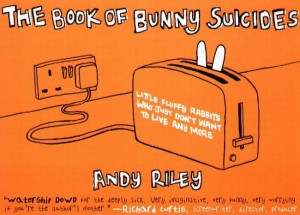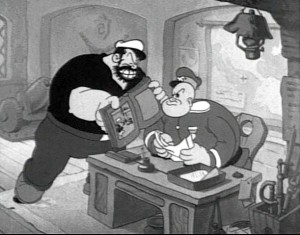 So, this dyslexic guy walks into a bra …
So, this dyslexic guy walks into a bra …
Funny? Cruel? Crude? Pointless?
Yeah, probably.
Humor has a way of picking at scabs, and it loves taboo territory: The shock factor of transgression is liberating. So, George Carlin‘s seven dirty words. The flip-flopped race-baiting of Melvin Van Peebles‘ movie satire The Watermelon Man. The rank exploits of a supervillain chunk of flying excrement in Dav Pilkey‘s juvenile Captain Underpants comic books.
Humor can be rough when it deals with the “other” — the resented and ridiculed Micks and Wops and Yids and dumb Swedes, all butts of the joke of an emerging nation trying crudely to make sense of its own sprawling immigrant variety. And it can be every bit as tough when it looks inward: I just finished reading Michael Chabon‘s dark detective comedy The Yiddish Policemen’s Union, and its feverishly over-the-top depiction of religious and cultural Jewishness (and, for good measure, Christian fundamentalist extremism) is hilarious and could only have been written by a Jew. In the annals of comic history, the seriously dimwitted — whether actually dumb or only considered dumb, for mocking purposes, by a core culture that thinks it needs an outcast — has always had a special role to play. Shakespeare had his Dogberrys and Aguecheeks. Sheridan had his Mrs. Malaprop. Texas has its village idiot. How many humorless pedants does it take to screw in a lightbulb?
Until this morning I’d never heard of Andy Riley or his cartoon book The Book of Bunny Suicides. Then, there they were, both of them, on the front page of The Oregonian, in this story by Joseph Rose. The idiot bunnies and their creator are the focus of a book-snatching in the town of Halsey, between Corvallis and Eugene in Oregon’s Willamette Valley. A 13-year-old boy brought the book home from the high school library, which also serves middle school students. His mom looked at it. She was horrified and disgusted — and now she’s holding it for ransom.
Not ransom, actually. True, she’s filed an official complaint to have the book removed from the library shelves. In the meantime, though, she’s not giving it back. She says she’s going to burn it instead. Which is funny, in a perverse sort of way. Braised rabbit is a favorite fall dish in Oregon country.

Let me suggest that Riley’s bunnies are extreme dimwits, in a clever sort of way. As such, they’re a lot like the rest of us — and that’s what makes them funny.
I’m not about to anoint Riley with a crown of comic genius, at least not on the small sampling of his work that I’ve perused. It’s pretty juvenile — but then, it’s for juveniles, and a lot of humor gets its verve and sting from its immature prankishness, which allows it to view the careful concealments of adult convention and pull its pants down at it. I happen to be the father of boys 14 and almost 11, and every day I wince at some sort of boy crudeness or another. I try to herd them, rein them in, get them to understand the limits of civilized speech and behavior, for crying out loud, and I’m sure they’re thoroughly sick of all the nagging (they tell me so, regularly). But I’d also worry if they weren’t poking at the edges. Life is a scary thing, and if you can’t laugh at it, how are you going to bear it?
Continue reading Bunny dies laughing; mom does slow burn →
 Memories fade. They begin vividly and then start to decay. And worse than decay, they start to deform. Until they are no longer very reliable. Valuable perhaps but not reliable. And then they vanish altogether. That’s one good way to think about memory.
Memories fade. They begin vividly and then start to decay. And worse than decay, they start to deform. Until they are no longer very reliable. Valuable perhaps but not reliable. And then they vanish altogether. That’s one good way to think about memory.








